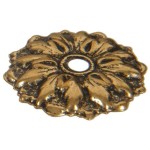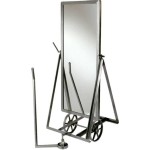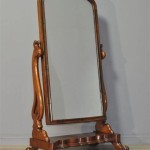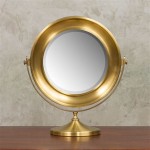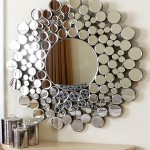Do Convex Mirrors Magnify?
Convex mirrors are curved mirrors with a reflective surface that bulges outwards. They are frequently used in a variety of applications, from security mirrors in stores to side-view mirrors in vehicles. A common question regarding convex mirrors is whether they magnify images, like concave mirrors, or if they diminish them. Understanding this aspect of convex mirrors requires an examination of how these mirrors reflect light and form images.
Image Formation in Convex Mirrors
Convex mirrors operate on the principle of reflection, where the angle of incidence equals the angle of reflection. Due to the outward curvature, incident light rays striking different points on the mirror's surface diverge after reflection. These diverging rays appear to originate from a point behind the mirror. This point is called the virtual image, as it is not formed by the actual convergence of light rays, unlike the real image formed by concave mirrors under certain conditions.
Virtual, Upright, and Diminished Images
The image formed by a convex mirror is always virtual, upright, and diminished. "Virtual" signifies its location behind the mirror surface. "Upright" means the image's orientation matches the object's orientation. "Diminished" indicates the image size is smaller than the actual object size. This diminished image is the key difference between the image formation of convex and concave mirrors, where the latter can produce magnified images depending on the object's position.
The Role of Focal Length
The focal length of a convex mirror is the distance between the mirror's surface and its focal point. The focal point is where parallel rays of light appear to converge after reflection. For convex mirrors, the focal length is considered negative, reflecting the virtual nature of the convergence point. The focal length plays a crucial role in determining the image size and location, though it never results in magnification in convex mirrors.
Field of View and its Importance
A significant advantage of convex mirrors is their wider field of view compared to plane or concave mirrors. The diverging reflected rays allow the observer to see a larger area than would be possible with a flat mirror of the same size. This wider field of view makes convex mirrors particularly useful in applications requiring surveillance or increased awareness of surroundings, such as in security systems, vehicle side mirrors, and at blind corners in roads or buildings.
The Magnification Factor
The magnification factor (M) of a mirror is the ratio of the image height (hi) to the object height (ho). For convex mirrors, the magnification factor is always less than 1, confirming the image is always smaller than the object. This mathematically proves that convex mirrors do not magnify. The formula for magnification also relates to the image distance (di) and object distance (do): M = -di/do. Since the image distance is negative for virtual images, the resulting magnification factor will always be positive and less than 1.
Comparing Convex Mirrors to Concave Mirrors
The key difference between convex and concave mirrors lies in the curvature of their reflective surfaces. Concave mirrors curve inwards, focusing incoming light rays, and can produce both real and virtual images, which can be magnified, diminished, or the same size as the object. Convex mirrors, curving outwards, always produce virtual, upright, and diminished images, effectively shrinking the view of a wider area. This distinction makes each mirror type suitable for specific applications.
Practical Applications of Convex Mirrors
The properties of convex mirrors make them invaluable in a variety of settings. Their wide field of view makes them ideal for security purposes, allowing observers to monitor larger areas. In vehicles, convex side mirrors provide drivers with an expanded view of their blind spots, enhancing safety. They are also used in stores to deter shoplifting and provide a broader view of the aisles. Furthermore, convex mirrors find applications in telescopes and optical instruments, where they can be combined with other lenses to create complex optical systems.
Can A Convex Mirror Form Magnified Image Quora
Can A Convex Mirror Form Magnified Image Quora

Can A Convex Mirror Form Magnified Image Quora

Magnification Produced By A Convex Mirror Is Always Equal To1b Less Than 1c More 1d Zero

Convex Lens Use Magnifying Glass

Mirror Magnification 101 Baci

Convex Lens Use Magnifying Glass
How Do Reflections From Convex Mirrors Make Objects Appear Smaller Quora

Concave Mirrors And Convex Image Formation Ray Diagram
How Do Some Mirrors Magnify E G Car Quora

